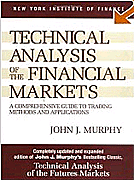Enrico Orlandini: Gold, Where to Now
By Enrico Orlandini
Jun 6 2007 9:30AM
www.dowtheoryanalysis.com
I have been following gold for better than twenty-five years and I’ll have to admit that I don’t recall seeing investors this discouraged in a long, long time. Maybe never! I think a lot of it has to do with a complete misunderstanding of what constitutes a bull market as well as how it functions. I read/been sent any number of commentaries about gold over the last month describing how the bull market is seasonal and May markets the time to sell. Others like Steven Hochberg of Elliot Wave fame have come out and stated that gold is due for a severe decline that will take price down to US $450.00. This is not the first time Mr. Hochberg’s made such a claim. He was wrong before and I’m here to say that he’s wrong now. Then there’s just pure fabrication. I skimmed an article the other day claiming that the well known gold analysts, the Aden Sisters, called an end to this leg up due to a technical failure. I had just read the article in question entitled “The Bubbling Metals” and the Aden Sisters made no such claim. When it comes to gold, misinformation is the rule rather than the exception.
If I use my clients as a gauge, you can cut the gloom with a knife. I am the first to admit that this leg up has taken a lot longer to get underway that I had anticipated, but there is no “Great Book of Gold” that you can thumb through in order to come to a quick and easy answer. Therefore I take pen in hand and try to smooth out some of the bumps. First and foremost, you must understand just why we have a bull market in gold. The reason is actually two-fold:
- Presently there is no currency in the world that is backed by anything other than a ‘promise to pay’, and
- All the world’s major economies are engaged in a printing war in an effort to have the cheapest currency. A cheap currency leads to cheap prices for exports.
With respect to the latter, the printing party actually originated more than a decade ago in the US and was later adapted by the Japanese in particular and the rest of Asia in general. Europe jumped onto the bandwagon somewhat further down the road. Currently there is no major economic power whose money supply is increasing at less than 10% per year and the US’s money supply is now increasing at a greater than 14%/year clip. That is an amazing figure for the world’s biggest economy.
Throughout history there have always been a group of investors, better known as the smart money, who have made a habit out of buying cheap and selling dear any significant bull market. This so-called smart money gets that way by paying very close attention to things like M-3, balance of trade, fiscal deficits, and so on. When they sense that things may get out of balance, they take the appropriate position, and wait for the inevitable. It should be mentioned that they are almost always the first ones to arrive and they are very, very patient. In the year 2000, the smart money noticed the staggering debt in the US, a world flooded by liquidity, and the very cheap price of gold. Being smart, they did the only thing they could do given the set of circumstances they encountered. They decided to accumulate gold and they went about their business as quiet as a church mouse. That for all intents and purposes was the beginning of phase 1 in the bull market for gold. In this historical chart for gold
|
You can see the bottom in late 1999, the retest in 2001, and the slow grinding methodical rise that followed and has continued relatively unabated until today. This first phase in the gold bull market continued roughly until December 2005 when gold closed above US $490.00/ounce which happened to be the last significant high way back in 1988.
I should mention that all major bull markets consist of three phases. As I’ve already mentioned, the first phase is where the smart money takes a position and by looking at the historical chart, you’ll see that it lasted five years. That’s a lot of accumulation! I would also like to point out that gold traded as a commodity during that initial phase and followed a certain pattern. One of the patterns had to do with seasonality: a rally from September to May and a pull-back throughout the summer. Just because a certain pattern prevailed during one phase doesn’t mean that it will dominate in the next phase. Once gold broke above the old US $490.00 high, it entered the second phase of the bull market and that is generally the longest of the three phases. Did you catch that? The second phase is almost always the longest; that means six years or more! The second phase features institutional buying where the Merrill Lynch’s of the world jump on board. Since gold is a special case, it is also highlighted by a transformation: gold ceases being a commodity and becomes money. Why would gold become money? It’s really not a complicated explanation. There’s just way too much worthless fiat currency floating around out there and more is being Eventually people catch on and look for something tangible that they can get their fingers on, and there is nothing more tangible than gold. It’s stood the test of time and it’s recognized in almost every culture around the world. Why I can take a gold coin to a tiny little Andean village at 15,000 feet above sea level, with no electricity or telephone, and somebody will recognize it for what it is.
So here we are, about two years into a six year second phase of a three phase bull market for gold. The third phase, when it finally comes around, will feature the kid who cuts your grass telling you about the great gold stock he just bought. It is the shortest of the three phases and is also features the blow-off to the upside. It will be the most volatile and the one where the price surges the most. If I were to guess, I would think that phase two will top out at US $1,200 to $1,600 and phase three will reach US $3,000 per ounce. And that is if the dollar doesn’t fold up its tent and go home. If that happens, all bets are off and gold could go to the moon.
That’s all well and good, but the average speculator wants to know what’s going to happen this week and not the next decade. Take a look at this weekly chart for gold and I’ll then I’ll give you my thoughts:

There are three things that you can take away from this chart and here they are in order of importance:
- There is the bottom band of a long-term trend line (long red line) that has held up for three years and it remains intact.
- If you look at the red and blue trend lines, you’ll see that gold is being compressed into a tighter and tighter trading range. Given the fact that this is a bull market, you have an 85% chance of seeing the break out to the upside.
- Look at the pair of horizontal green lines that I’ve drawn in. These define a period of consolidation that has lasted almost sixteen months.
So when I add these three up, what do I get? Simple! You get a market that is on the verge of an upside explosion that will not only catch most speculators by surprise, but it will catch them on the sidelines trying to chase it on the way up. The next question is: when is this upside explosion about to begin? Here’s my answer: it already has. Precisely, the move up everyone has been waiting for began on May 24th when gold bottomed at 651.50 and bounced of the red trend line. It is now shaping up for its third and final run at good Fibonacci resistance at 695.5. What’s more gold will not only break through 695.5, but will run through the May 11, 2006 high of US $730.40 and up to a minimum of $775.00. That’s been my price target for six months but personally I can’t believe that gold has spent this much time building a base to rally another one hundred dollars. No, I suspect we built this base in order to support a run up to the all-time high of $882.50. It only makes sense when you stop to think about it. Just about everyone and their brother have thrown in the towel and that’s what a gold bull market does best. It sucks you in when you have no business buying and it pushes you out just when you should be in. Next stop, gold at $775.00!
Dow Theory Analysis SAC
ebo@dtanalysis.com
Lima, Peru
June 04, 2007
Labels: Enrico Orlandini, gold
















![[Most Recent Quotes from www.kitco.com] [Most Recent Quotes from www.kitco.com]](http://www.kitco.com/images/live/t24_au_en_usoz_6.gif)
![[Most Recent Quotes from www.kitco.com] [Most Recent Quotes from www.kitco.com]](http://www.kitco.com/images/live/au_go_0030_ny.gif)
![[Most Recent Quotes from www.kitco.com] [Most Recent Quotes from www.kitco.com]](http://www.kitco.com/images/live/au_go_0365_ny.gif)
![[Most Recent Quotes from www.kitco.com] [Most Recent Quotes from www.kitco.com]](http://kitconet.com/charts/metals/silver/t24_ag_en_usoz_4.gif)

















0 ΣΧΟΛΙΑ (COMMENTS):
Post a Comment
<< Home